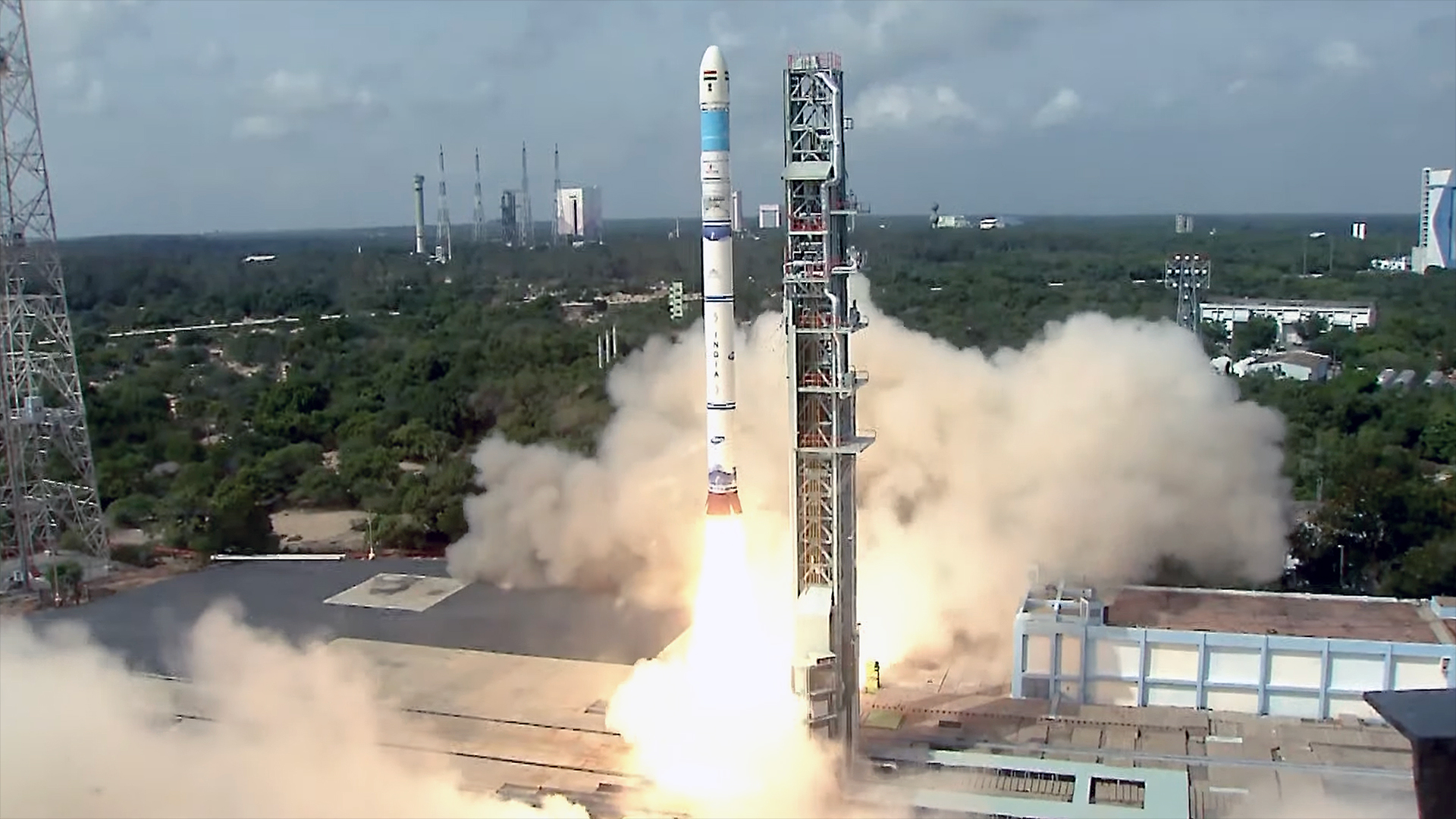
India launched an advanced Earth-observing satellite Thursday (Aug. 15), on the third-ever mission of its new SSLV rocket.
The Indian Space Research Organisation's EOS-08 spacecraft lifted off atop the 112-foot-tall (34 meters) SSLV — short for Small Satellite Launch Vehicle — from Satish Dhawan Space Centre tonight at 11:47 p.m. EDT (0347 GMT or 9:17 a.m. India Standard Time on Aug. 16).
This was the third flight for the SSLV. Its debut, in August 2022, ended in failure: The rocket deployed its two payloads — the EOS-02 Earth-observing satellite and a tiny student-built cubesat — into the wrong orbit, and they fell back to Earth in relatively short order.

The SSLV bounced back on its second flight, which occurred in February 2023. The rocket successfully deployed its three payloads — EOS-07 and two cubesats — into their designated 280-mile-high (450 kilometers) circular orbits.
Related: Facts about ISRO, the Indian Space Research Organisation
On this third flight, the rocket deployed EOS-08 into a circular orbit with an altitude of 295 miles (475 km), according to ISRO. Once fully checked out, the 387-pound (175.5 kilograms) satellite will study Earth with two instruments, the Electro Optical Infrared Payload (EOIR) and the Global Navigation Satellite System-Reflectometry payload (GNSS-R).

EOIR's infrared data will be used "for applications such as satellite-based surveillance, disaster monitoring, environmental monitoring, fire detection, volcanic activity observation and industrial and power plant disaster monitoring," ISRO officials wrote in a mission description.
GNSS-R, meanwhile, will demonstrate the ability to use reflected satellite-navigation signals to detect floods, assess soil moisture and analyze winds over the ocean, among other applications.
EOS-08 also carries an ultraviolet-light dosimeter, which will help characterize the space radiation environment ahead of the Gaganyaan mission, India's first-ever crewed spaceflight, which could launch as soon as 2025.
EOS-08 is designed to operate for a year in orbit. The spacecraft's work will be groundbreaking, laying the foundation for other Earth-observation satellites down the road, according to ISRO.
"The primary objectives of the EOS-08 mission include designing and developing a microsatellite, creating payload instruments compatible with the microsatellite bus, and incorporating new technologies required for future operational satellites," ISRO officials wrote in the mission description.







